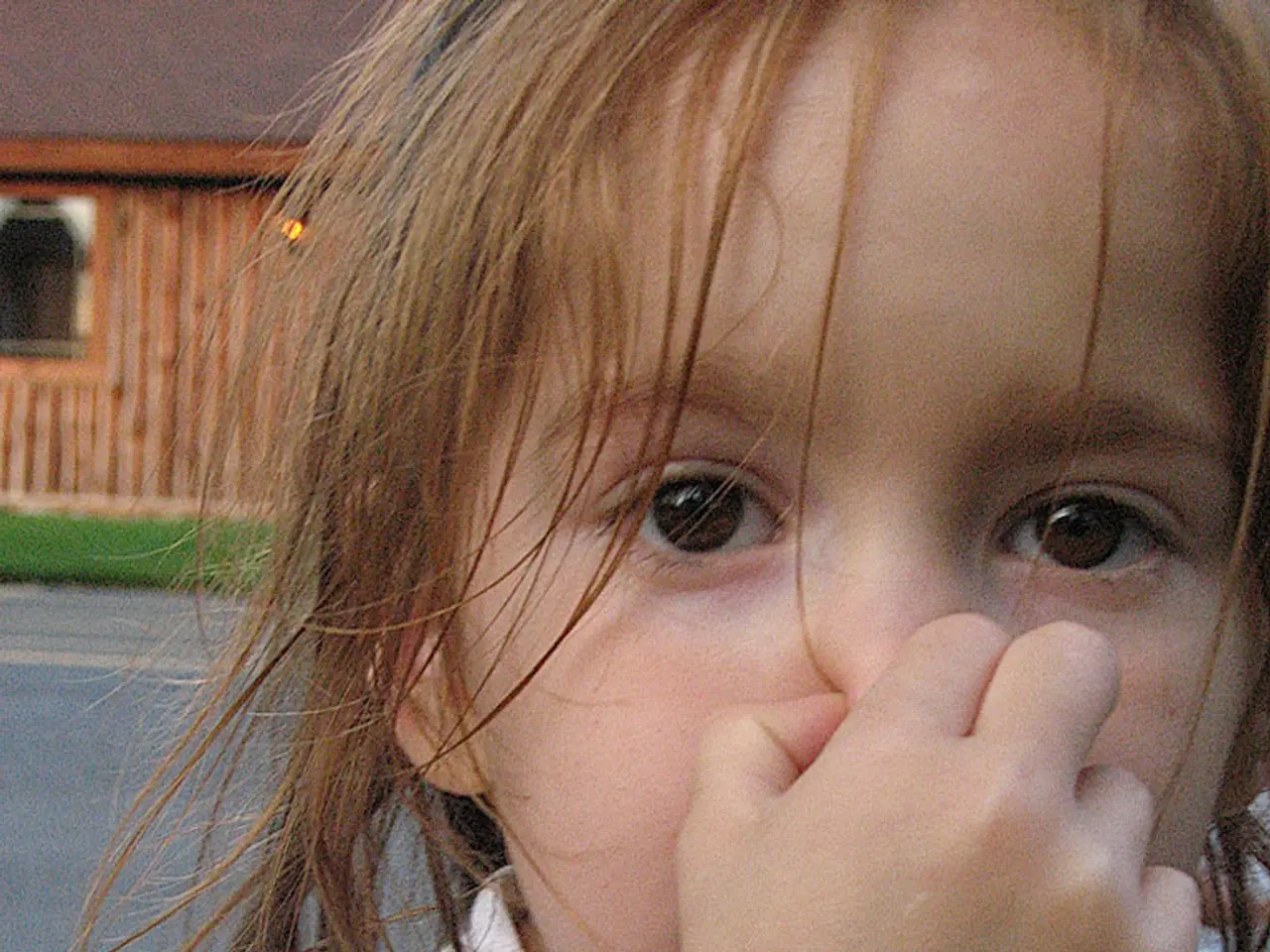Child Nosebleeds: Recognizing When Medical Attention is Required, Causes, and Measures to Avoid
Nosebleeds, or epistaxis, are a common occurrence in children, especially those aged between 2 and 10 years and older people aged 50 to 80 years. While most nosebleeds are short-lived and not serious, it is important to understand the common causes and prevention tips to minimise their frequency and severity.
Common causes of nosebleeds in children include dry air and nasal dryness, nasal irritation and inflammation, nose picking and trauma, use of nasal sprays or medications, and environmental factors such as heated indoor spaces, exposure to smoke or strong odours, high altitudes, and dry climates. Less common causes can include conditions that affect bleeding or blood clotting, certain medications, heart disease, high blood pressure, cancer, and structural abnormalities.
To treat a child's nosebleed at home, sit the child down, reassure them, have them sit upright and leaning slightly forward, pinch the tip of the nose, and apply pressure for around 10 minutes. However, it is important to avoid leaning the child back, filling the child's nose with gauze or tissue, or spraying anything into the nose.
Prevention tips for nosebleeds in children include keeping nasal passages moist using saline nasal sprays 1–2 times daily and applying saline nasal gels to hydrate the nasal lining. Moisturising the air in the child’s bedroom, especially in dry or heated environments, using a humidifier or vaporizer, can also help. Avoiding nose picking and keeping fingernails trimmed short can reduce injury risk, while teaching children to blow their nose gently, especially when they have colds or allergies, can prevent rupturing blood vessels.
Using protective gear during sports can prevent injury to the nose, while managing allergies can reduce nasal inflammation and irritation. Avoiding overuse of nasal decongestants and following doctor’s advice on nasal medications can also help. Keeping the nose clean and hydrated with regular saline sprays and gels can prevent crusting and dryness that can trigger bleeding.
In some cases, surgery may be required to fix a problem with the blood vessels in the nose. Children with severe nosebleeds should see a healthcare professional, who will try to stop the bleeding and examine the child to determine the cause. Approximately 60% of people will experience a nosebleed at some point during their life. If nosebleeds are frequent, severe, or accompanied by other symptoms, a healthcare provider should be consulted.
- Certain types of sclerosis, such as Multiple Sclerosis, can lead to other health conditions like blocked nasal passages, potentially causing nosebleeds.
- Predictive science might help in understanding the link between Alzheimer's disease and nosebleeds, as both are associated with degeneration and aged disorders.
- Psoriatic type arthritis, apart from joint issues, can also cause nasal dryness and increased susceptibility to nosebleeds.
- Obesity, a health-and-wellness concern, might have connections with an increased risk of nosebleeds due to inflammation and nasal dryness.
- Nosebleeds can also be a symptom in individuals with HIV, adding another health concern to an already complex condition.
- Asthma, a lung disorder, can involve inflammation and dryness of the nasal passages, leading to an increased likelihood of nosebleeds.
- Macular degeneration, a vision disorder, is often associated with aging, but it may also bring about nosebleeds due to shared risk factors.
- Apart from nosebleeds, other nose disorders like cancerous growths can also affect the respiratory system, causing potential concerns for health and wellness.
- Pfizer, a pharmaceutical company, has conducted research on treatments for conditions like diabetes, which can contribute to nosebleeds due to its effects on blood vessels and blood sugar levels.
- In addition to nosebleeds, diabetes can lead to other complications concerning health and wellness, emphasizing the importance of proper diabetes management.
- Science continues to explore the relationship between conditions such as cancer, HIV, and various nose disorders to improve treatment options and preventive measures for both nosebleeds and the underlying conditions.




